Queenslander homes, with their unique charm and distinctive architectural style, are an integral part of Australia’s heritage, particular in Brisbane. These homes, known for their timeless beauty and adaptability to the Queensland climate, pose unique challenges and opportunities for...
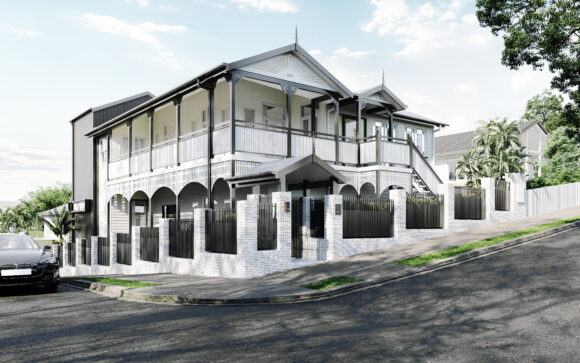
Queenslander homes, with their unique charm and distinctive architectural style, are an integral part of Australia’s heritage, particular in Brisbane. These homes, known for their timeless beauty and adaptability to the Queensland climate, pose unique challenges and opportunities for renovation. This guide aims to walk you through the intricacies of renovating these iconic structures, ensuring that their character is preserved while they are adapted to modern living standards.
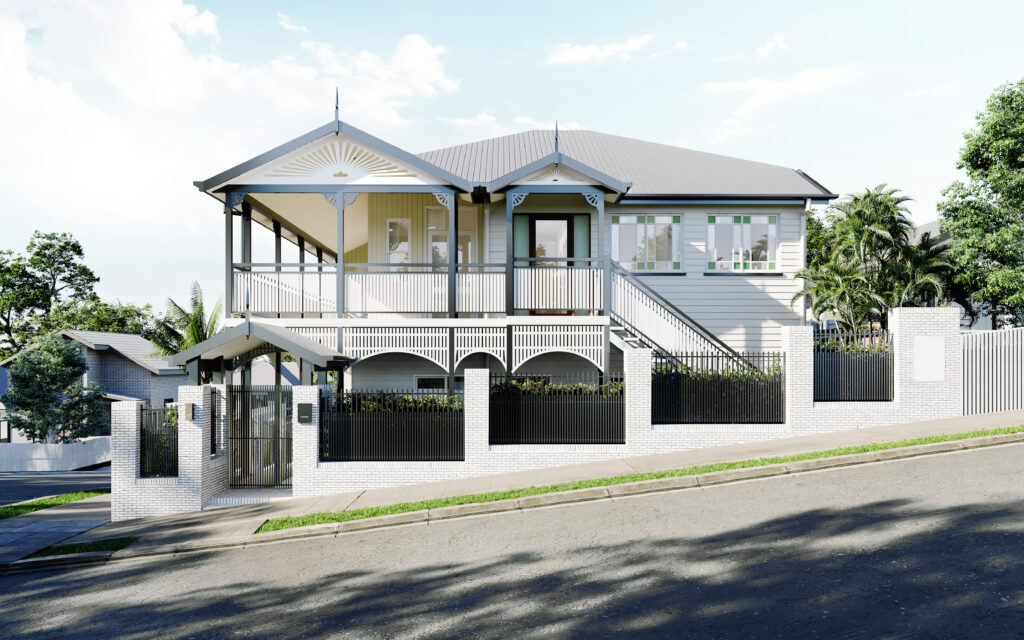
Isaac House Render by Darren James
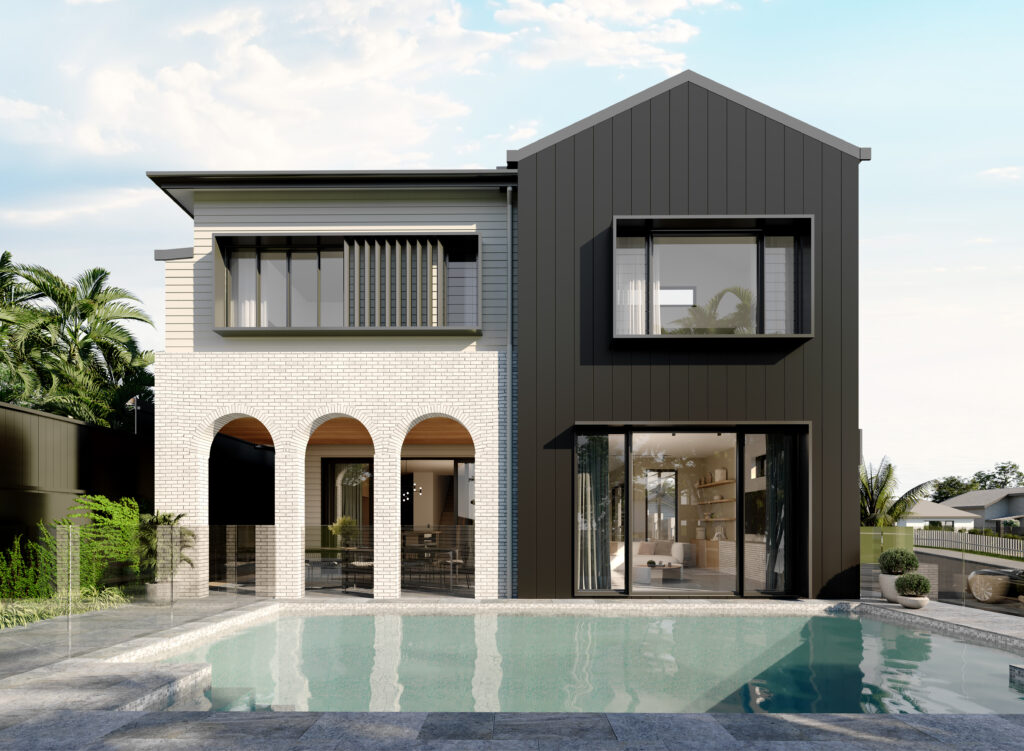
Isaac House Render by Darren James
Understanding Queenslanders
Originating in the late 19th century, Queenslanders reflect a range of styles from the classic colonial to the more modern post-war designs. Typical features include hardwood timber framing, single skin VJ walls, decorative mouldings, tin roofs, high ceilings, and expansive verandas. Each style speaks to a different era and approach to the design, yet all share a common response to the local climate and lifestyle. recognising these elements is crucial in maintaining the integrity of the home during the renovation.
Legal and Planning Considerations
Renovating a Queenslander often involves navigating complex restrictions to any external and sometimes internal alterations. Many of these homes fall under heritage or character protection, requiring permits for any significant alterations. Understanding the heritage overlay and complying with local council regulations is crucial to avoid legal pitfalls multiple potential design changes and an extended periods of time going back and forth with council for your approval. Proper planning and research are vital, including consulting with heritage advisors or architects specialized in Queenslanders.
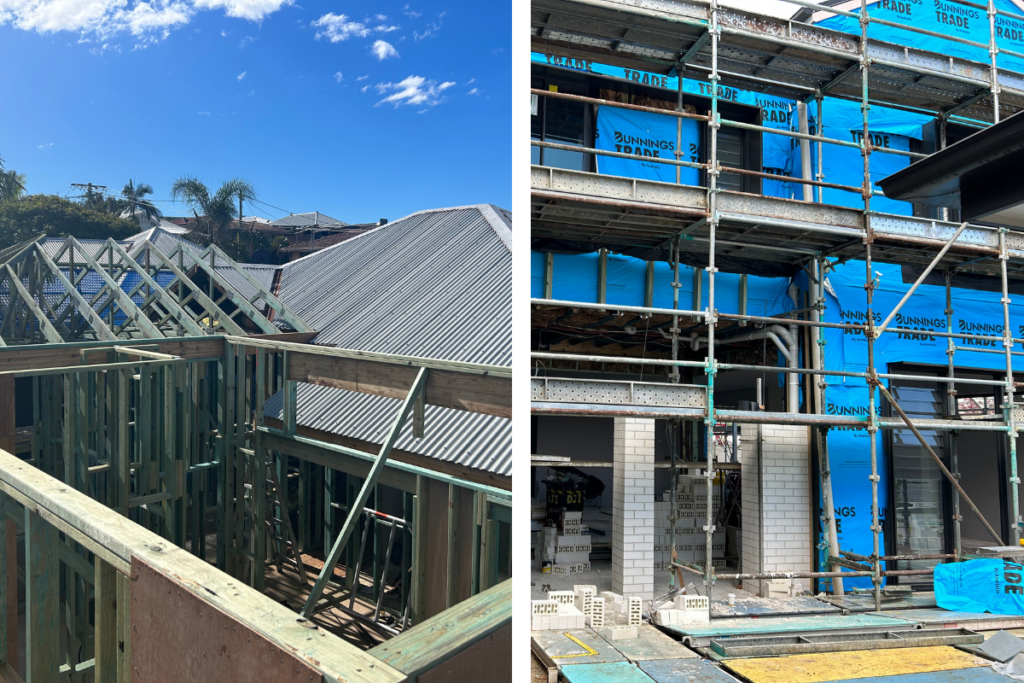
Isaac House by Darren James
Common Challenges and Solutions
Renovating a Queenslander can uncover a variety of challenges. Re-levelling may be necessary due to the age of these homes, and structural integrity must be carefully assessed. Older materials, like lead based paints or asbestos linings, require careful treatment and handling. In addition to this, addressing issues from previous renovations, often done without consideration for the home’s original character, is a common task. The key here is to approach each challenge with respect for the home’s heritage and structural uniqueness.
Raising and Building Under
A popular renovation choice is lifting the house to build underneath, effectively doubling living space. This process, while offering great potential, requires meticulous planning and understanding of structural implications. It’s also important to consider the impact on the home’s facade and how the new space will integrate with the existing structure. Say something about keeping the scale and proportion right for the front facing of the house
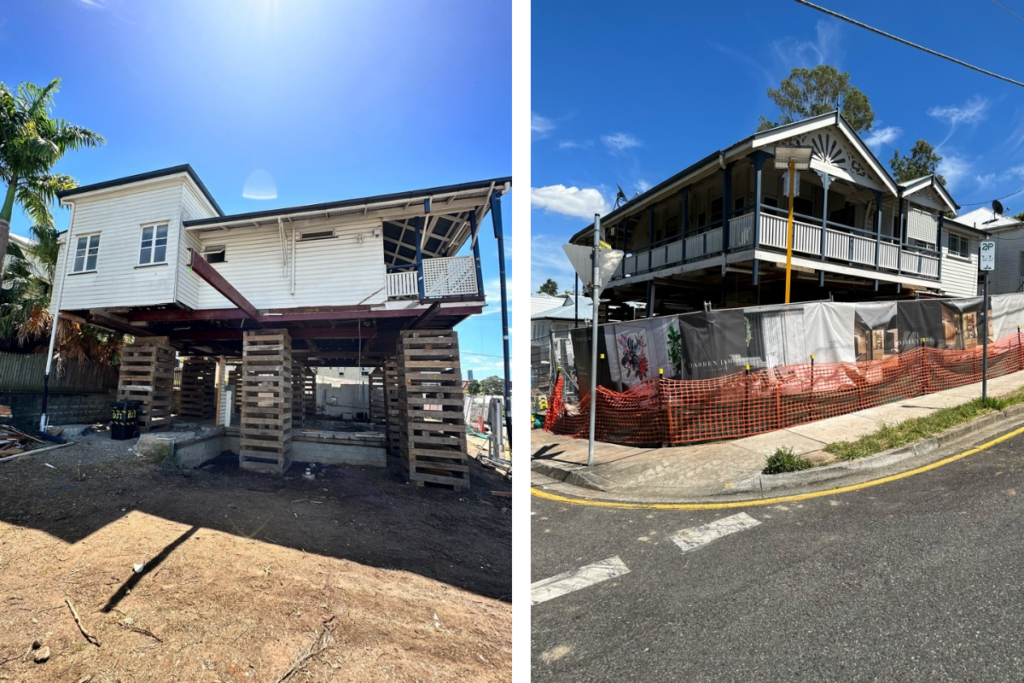
Isaac House by Darren James
Selecting the Right Builder
Choosing a builder with experience in renovating Queenslanders is paramount. They should have a portfolio demonstrating their expertise in dealing with the unique aspects of these homes. Ask for references, inspect their previous work, and ensure they have a good understanding of both the aesthetic and structural nuances involved.
Prioritising Renovation Elements
Deciding what to renovate and what to preserve is a delicate balance. Key features like traditional timberwork, verandas, and high ceilings should be retained where possible. Modernising aspects like internal linings, wiring, plumbing, and insulation should be prioritized for comfort and efficiency. It’s about blending the old with the new in a way that respects the home’s history.
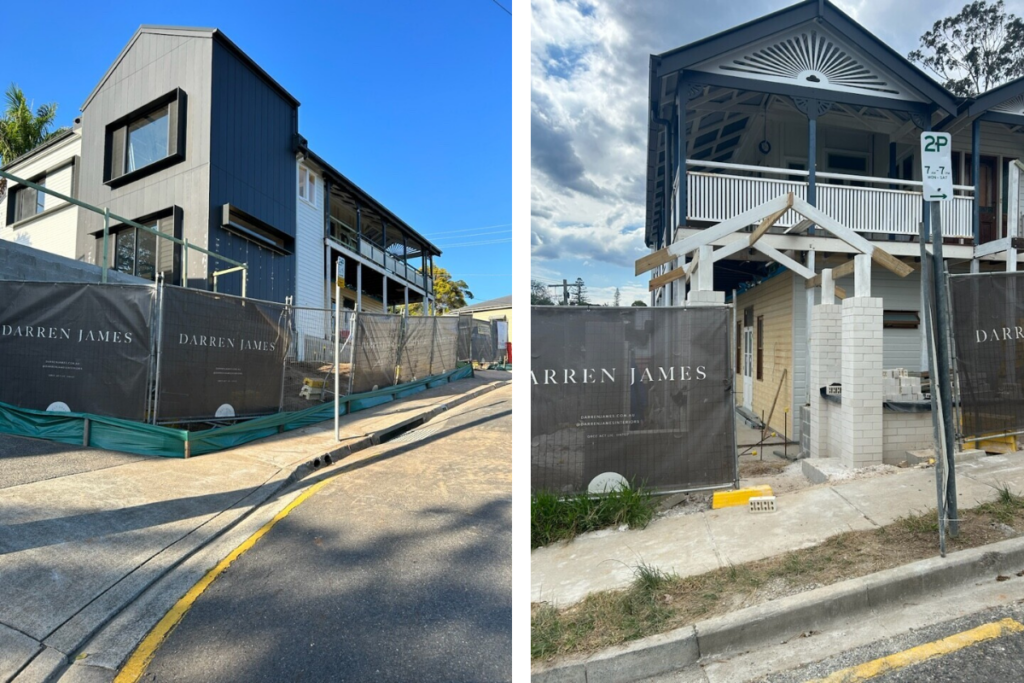
Isaac House by Darren James
Extension and Renovation Ideas
This could have a modern element attached to the home that show a distinct difference of old and new?
Extensions should complement the existing structure, using materials and designs that echo the original home. Contemporary needs can be met through creative ideas like integrating indoor-outdoor living spaces, updating kitchens and bathrooms, and adding eco-friendly features. Each addition should be sympathetic to the original design, ensuring a seamless transition between old and new.
Preparing for Renovation
Before embarking on a renovation, make sure to have a complete set of detailed plans and a clear scope of work considering your budget, timeline, and the extent of the work. Expect disruptions and plan accordingly, especially if residing in the home during renovation. A thorough preparation phase can significantly reduce stress and ensure a smoother renovation process.
Renovating a Queenslander is a journey that requires patience, respect for history, and a creative vision. It’s about preserving the essence of the past while making the home suitable for modern living. With careful planning, expert guidance, and a passion for these unique homes, your renovation project can breathe new life into a piece of Australia’s architectural heritage.
Next Steps
Are you ready to embark on the journey of renovating your Queenslander? Contact Darren James for expert advice and bespoke renovation services. Let us help you transform your Queenslander into a home that honours its past while embracing the future.
The post The Ultimate Guide To Renovating a Queenslander Home appeared first on Darren James Interiors.


